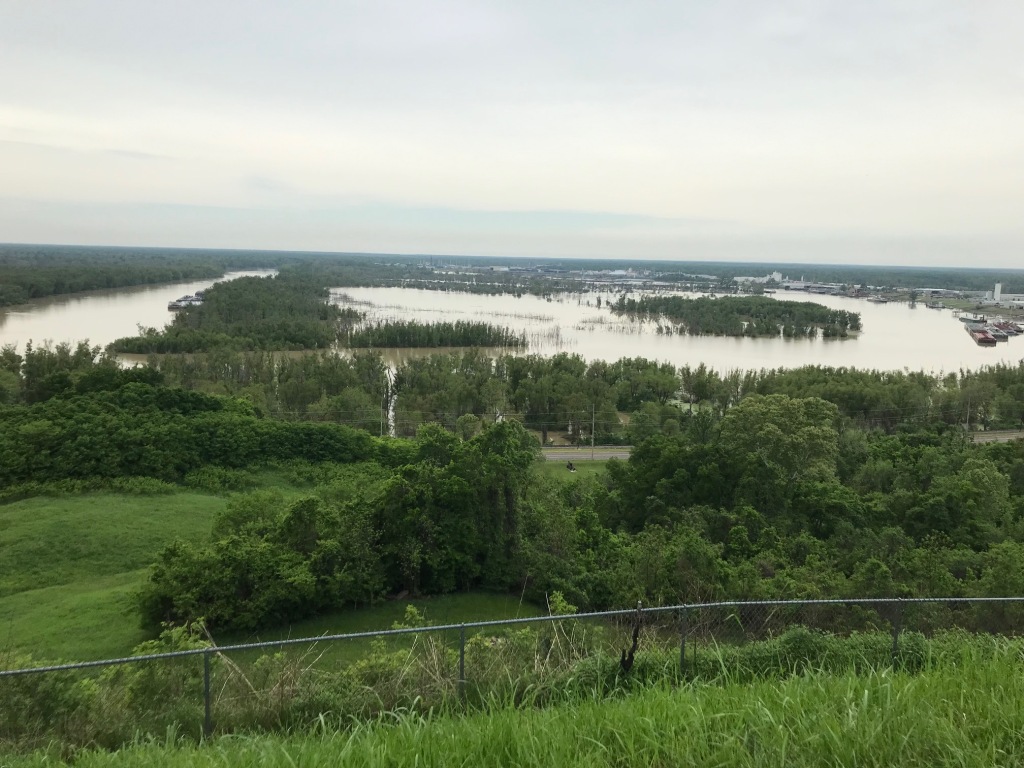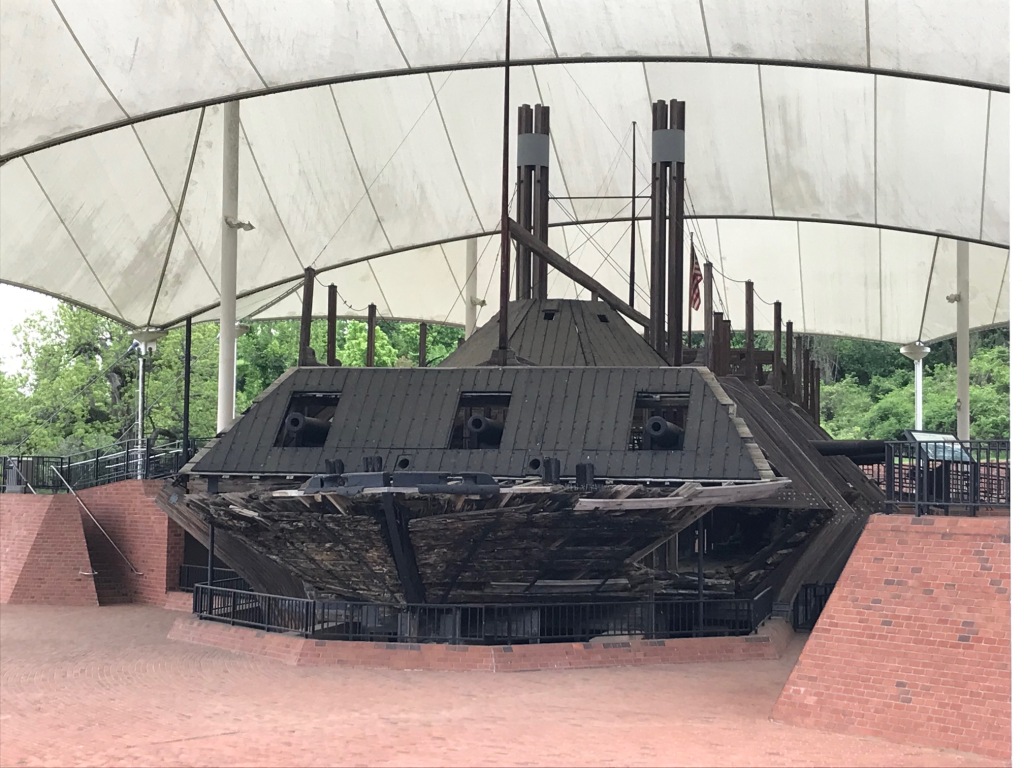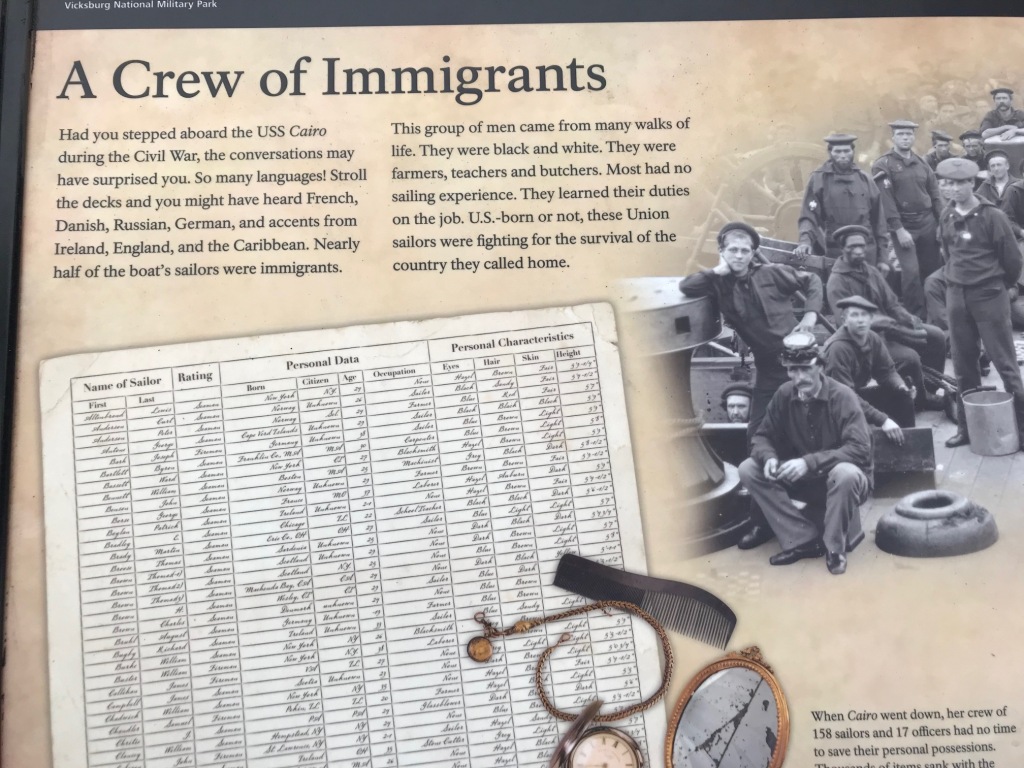I grew up in Pennsylvania, a little over an hour from Gettysburg, and have made numerous trips to one of America’s most iconic battlefields. I learned the movement of armies over three days of the battle and stood transfixed by the photos of sharpshooters at Devil’s Den. Another iconic name came to be associated in my mind with Gettysburg: Vicksburg. A world away in Mississippi, the southern city fell to the Union army the day after the Confederate loss at Gettysburg — July 4, 1863. The one-two punch is often considered by historians as the turning point of the Civil War. While over time I visited various other eastern Civil War battlefields, Vicksburg remained at the top of my to-see list.

Recently, I checked Vicksburg off my list. Anyone who has read my writing knows I’m all about the power of place to fuel the imagination. Vicksburg did not disappoint. Driving eastward from Louisiana, as I did, a traveler traverses flat fields. Once across the Mississippi River, the bluffs rise immediately on the river’s eastern shore and there sits Vicksburg – high on these bluffs. One can immediately see why it was a natural defense and why the town was the last point on the Mississippi left for the Union to conquer. The fall of Vicksburg after a six-week siege brought the Union full control of the Mississippi River and cut the Confederacy in two.
During the siege the city and its 27,000 soldiers and 3,000 non-combatants were cut off from the world, surrounded by gunboats, soldiers and batteries, the civilians forced to take cover in crudely dug caves. Mark Twain described their existence in his book Life on the Mississippi: “all in a moment come ground-shaking thunder-crashes of artillery, the sky is cobwebbed with the crisscrossing red lines streaming from soaring bombshells, and a rain of iron fragments descends upon the city, descends upon the empty streets — streets which are not empty a moment later, but mottled with dim figures of women and children scurrying from home and bed toward the cave dungeons– encouraged by the humorous grim soldiery, who shout ‘Rats, to your holes!’ and laugh.” Surrounded by a 12-mile ring of Union troops, the inhabitants of Vicksburg struggled to survive for 46 days.
Sixteen miles of National Park Service roads traverse the preserved battlefield in Vicksburg National Military Park and tell the story. As my friends and I drove the park road, we were immediately struck by the hilly, ravine-filled landscape. Deep chasms cut steeply down a mere ten feet from the road. As with other Civil War battlefields, large elaborate state memorials dot the grounds, citing the bravery of those who gave their lives. While Union general Ulysses S. Grant is by far the most well-known of the many characters in the story of Vicksburg, the existing journals of ordinary citizens detail the harrowing existence for civilians trapped in the town.

My favorite section of the park was the high bluff north of the city, which provides a stunning view of how the river has changed course over time. Today the Mississippi River takes a sharp turn west just below this spot, whereas during the battle it flowed at the base of the bluff. The present-day Yazoo River diversion, an illusory Mississippi River of sorts, helps a visitor imagine the reality in 1863. At the bottom of the bluff, the national cemetery sprawls over rolling ground, the final resting place for nearly 17,000 federal soldiers (about 13,000 of which are unknown).





Nearby sits the U.S.S. Cairo Museum, a fascinating feature of the park. The ironclad gunboat Cairo was one of six built to ply the Mississippi River. When an explosion tore through it on December 12, 1862, it sank in minutes, the first vessel sunk by an electrically detonated torpedo (mine). All 175 crew on board survived. Buried in feet of Mississippi mud, its resting place remained hidden until discovered in 1956. Carefully raised to the surface, its remains are now meticulously preserved under a large canopy, and a small museum tells its story. It is one of only four surviving Civil War ironclads in existence.
Vicksburg is unique among America’s Civil War battlefields, certainly for its story, but also for its landscape. Whereas the town of Gettysburg became an accidental battlefield forever etched in the history of the nation, Vicksburg was an inevitable moment, a fortress that had to be conquered to bring northern victory and bring the nation together again.
Related Posts:



Nice post, Tim. I’ve never been there. I like the photos of the ironclad; it’s impressive. And the interesting note about the ever-meandering Mississippi.
Like you, I’ve long wanted to visit. But unlike you, I never have! Thanks for sharing your reflections.
Pingback: A gem of preservation in a complex story | historyplaces